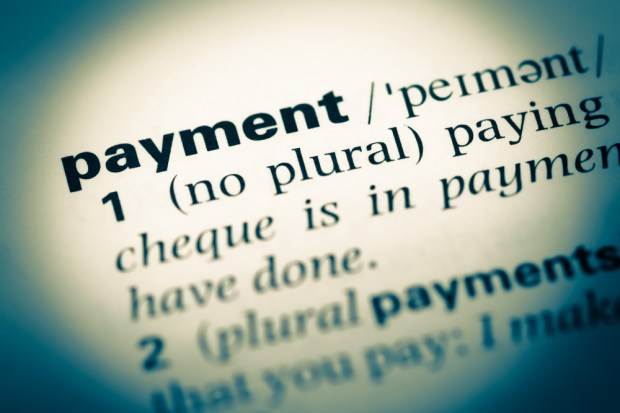What’s In A Name? Faster Payments

Push payments. Instant payments. Real-time payments.
Every endeavor has its vocabulary, and the payments arena is no different. Although industry observers and participants use the above terms interchangeably, there are differences in transaction timing that can make all the difference to recipients.
In short, when it comes to speed, all payments are not created equal.
In an interview with PYMNTS’ Karen Webster, Drew Edwards, Ingo Money CEO, helped clarify the nomenclature and delved into push payments, a form of instant payments.
(Readers of this space will recall the longstanding, and continuing, dialogue between the two over killing the check.)
“We live in a culture where there are generations coming along that don’t like to wait” — where phones can be used to order food and have it delivered, or order a car service, or get online and ask a question, said Edwards.
But payments have lagged behind those other areas, creating headaches and costs for consumers and companies alike. Now, companies are trying to fix that with instant payments.
Webster noted many payment-related phrases are thrown around the financial industry that tend to be used for the same thing but do not mean the same thing — not in practice anyway.
A quick rundown of terms would include fast funds, Same Day ACH and, of course, “real-time payments,” which seems to be a catchall phrase.
Ah, but: They’re all different, said Edwards — each phrase is tied to different concepts that should be unbundled a bit.
Used as a blanket concept, these terms describe “different ways of solving the same problem, which is trying to create this instant payments environment,” said Edwards.
But scratch the surface, and not all is as swift as it may seem.
For example, Edwards noted that ACH creates confusion because when talking about same-day funding, some people also call it instant payments.
He explained to Webster, “Instant does not mean same day. Instant means 24 hours, seven days a week … it means that one minute after you try to pay somebody something, they get their funds. ACH is still a batch-based system and is speeding up their funds” but is not instant, he clarified.
Real-time payments, he told Webster, are part of a broad bank initiative to accelerate the settlement between and among banks, which is a positive development.
Instant and real-time do not mean the same thing. There are three components to an instant payment: “They have to be on demand,” he noted, offering the example of an Uber driver who, after their shift, wants to be paid instantly at the push of a button. Secondly, the real-time funds must be final — another departure from same-day or next-day settlement options with ACH and other offerings, where reversibility is always an option. And finally, the capability to make a payment instantly needs to be there 24/7, said Edwards.
There’s a separate timeframe all its own when talking about the world in terms of push payments, said Edwards. For push payment capabilities offered by Ingo Money, it’s about reversing the rails the company already uses for debit and digital wallet transactions to deliver real-time, instant payments, he explained. Ingo offers its clients a proprietary integration with PayPal, card companies and more than two dozen endpoints to instantly deliver irreversible funds 24/7 to more than 4.5 billion consumer accounts. “We consider ourselves an instant money company,” Edwards said.
The reason so many people are talking about real-time, instant and push payments is because of consumer demand. People want to get paid in an on-demand manner more efficient than the $22 trillion in paper checks sent out in the mail and not reliant on ACH systems.
Edwards reinforced this by pointing out that in the inaugural issue of the PYMNTS Disbursement Satisfaction Index, “consumer(s) spoke out loud and clear, as only 4 percent of (them) like getting checks. You have an instrument here where the user is 96 percent of the time dissatisfied.”
And yet, as many as 27 percent of corporate disbursements are still made through paper checks. Drilling down a bit, 61 percent of insurance firms and 93 percent of law firms use paper checks for disbursements.
Edwards said Ingo Money helps these types of companies transition to instant payments by focusing both on the user and partner experience. He explained that Ingo includes everything a partner needs to complete a transaction — the regulatory structure, a sponsor bank, authentication, risk management and industry-leading routing intelligence — in the background. What they call, “the plumbing.”
“Most of the companies we see may start out thinking they will [do instant payments on their own] and then will realize how complicated it is,” he continued. “They come back to Ingo where there is a single API and everything is built in, so they can focus on their customer experience.”
Ultimately, no matter the language you use, push payments will deliver both cost-savings and a better customer experience, according to Edwards.
